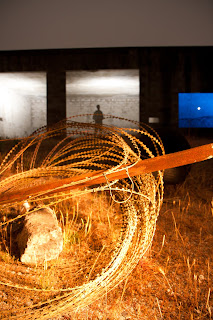 There are countless rules and regulations that apply to the art of photography. You should learn them so that you can know how to break them well!
There are countless rules and regulations that apply to the art of photography. You should learn them so that you can know how to break them well!When I’m shooting photos, a lot of people assume I’m a good photographer because I have a big camera. While I may be a good photographer (and that’s always up for interpretation!) it’s not because of my camera. A good photographer is not reliant on his equipment; he can make interesting photographs with any camera- a camera being as little as any lens positioned correctly in front of a light-sensitive recording medium of some variety.
All SLR (single-lens reflex) cameras offer full manual control of exposure (and usually many other settings), and even a lot of digital point-and-shoot cameras offer some level of manual control over some of the decisions the camera would make about your image if it was set on fully automatic shooting. BUT! No camera can ever have control of the most important element of the picture: what you put in front of the lens. Because of this, it really is the photographer that makes the difference in a good photo.
Every camera lets you see a preview of the image you’re about to take before you trigger the shutter. This (usually) rectangular view is known as your frame. The way you arrange different objects within your frame, and what you choose to include and exclude in the frame, is called your composition. This is how you control what’s included if your photo- remember, that’s the most important element in making a good photograph!
Next time you’re out taking pictures, try to consciously think about your composition, or what you’re showing in your frame. Show your viewer something they don’t see every day. Most successful photographs have a single subject, or a central focus point in the image, or what that photo is “of.” Make it obvious what your subject is. Tell your viewer through your image, “Look at this X! Look how dramatic/lonely/exciting/drab/powerful it is!” Some compositions will work better than others. The way to find out what works is to get out and experiment!
Get up high, or get on your belly to get a different angle of view of your subject.
Try standing far away from your subject and zooming in close on it, then walk closer to the same subject and zoom out and shoot the same photo. This can make a huge difference in perspective.
Position your subject away from the middle of the frame. A general guideline is called the “Rule of Thirds.” Imagine a standard tic-tac-toe board drawn across your frame. Put your subject on any one of the four intersection points of the lines. If you’re shooting a landscape, put the horizon line on one of the horizontal lines on that tic-tac-toe board. This is often the easiest way to make your photo more visually interesting.
Look for interesting lines and patterns to include in your composition.
Include contrasting colors in different areas of your frame.
Keep your composition simple; try to eliminate elements from the frame that don’t add to what you want to do with the image. Sometimes the most powerful compositions are the most sparse and basic. K.I.S.S.- Keep It Simple Stupid!
Remember, there are no steadfast rules in photography!
Great blog, Andy!
ReplyDeleteA suggestion about composition: maybe composition is not only What you put in front of the lens... But also WHEN.
As someone said, one of the distinguishing marks of the pro is their passion to be out before dawn and after dusk, to catch the "golden hour"... When normal people are still tucked in bed or comfortably home watching Monday night football :)
http://mountain-plover.com (I am just tech support most of the time....)
Thanks Pete! That's a good point about watching when you shoot the photo... that could mean shooting during that time of day when the light is just right, or catching that instant when someone's expression is just right!
ReplyDelete